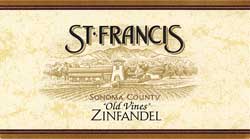 |
|
Wine Details
Price:
$22.00 per bottle
Description:
When we say “old vines,” we mean vines at least fifty and often up to a hundred years old. We’ve found a series of small vineyards in Sonoma County that date back to the turn of the last century. Because of their great age, these plots yield less than four tons per acre of exceptionally concentrated fruit. Petite Sirah and Alicante Bouschet vines planted among the Zinfandel add texture and color to the “field blend. ”We hand harvest late, so that some of the grapes have become raisins, further intensifying the varietal flavors. Once crushed, the wine is fermented in stainless steel tanks for twelve to eighteen days, then aged in new American oak barrels from twelve to fifteen months. The wine is held another four to eight months after bottling. This is a plump, layered Zin with complex black cherry, raspberry, and black pepper flavors that unfold on the palate.
|
|
Varietal Definition
Zinfandel:
Zinfandel is a variety of red grape planted in over 10 percent of California wine vineyards. DNA fingerprinting revealed that it is genetically equivalent to the Croatian grape Crljenak Kaštelanski, and also the Primitivo variety traditionally grown in the 'heel' of Italy. It is typically made into a robust red wine. Its taste depends on the ripeness of the grapes from which it is made. Red berry fruits like raspberry predominate in wines from cooler areas such as the Napa Valley, whereas blackberry, anise and pepper notes are more common in wines made in warmer areas such as Sonoma County. Many Zinfandels come from head pruned ‘Old Vines’. ‘Old Vine’ is generally understood to mean a vine that is more than 50 years old and that produces less than three tons per acre. ‘Head Pruning’ is an old European style of pruning that trains the vine into the shape of a goblet. It requires no wires or other complex trellis systems. Head pruning spreads the fruit uniformly along the vine and allows light penetration.In the USA a semi-sweet Rosé (blush-style) wine called ‘White Zinfandel’ has achieved widespread popularity. In fact, this popularity has so outstripped all other forms that many fans think there is actually a grape called “White Zinfandel” (there isn’t)!
|
Alicante Bouschet:
Minor grape originating from a 19th century cross using the Aramon and ancient Teinturier native vine, resulting in a hybrid varietal. This in turn was crossed with the Grenache to give the named grape. Widely grown in France, California and Spain. In the latter country it is known as Garnacha Tintorera. In the cool Champagne region of France it is the main grape used to make the sweet "vin mousseux" - (sparkling wine). Often known as "Alicante" for short. Elsewhere the canned juice is used by many amateur winemakers for fermenting homemade wines.
|
Petite Sirah:
Petite Sirah is the same as the French variety known as Durif, a cross of Peloursin, with the true Syrah. A French nurseryman, Dr. François Durif, propagated the grape trying for resistance to powdery mildew and named it after himself, in the 1870s. Petite Sirah has long been an important blending grape, prized primarily for its deep color and fairly intense tannin. It is the variety most often chosen to blend into Zinfandel for added color, complexity, body, and to tone down the tendency of Zins toward "jammy" fruit.
|
|